Lipidomics Method Could Bring Fast Cancer Diagnosis
|
By LabMedica International staff writers Posted on 08 Mar 2016 |
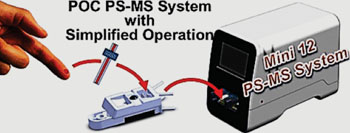
Image: The benchtop miniature mass spectrometer system, Mini 12, with ambient ionization source and tandem mass spectrometry capabilities (Photo courtesy of Purdue University).
The field of lipidomics has been significantly advanced by mass spectrometric analysis, but the distinction and quantitation of the unsaturated lipid isomers, however, remain a long-standing challenge.
A new analytical tool for medical applications might be used to diagnose cancer more rapidly than conventional methods and has implications for the field of lipidomics, which involves the identification and quantification of cellular lipid molecules, how they interact with other components in cells and their role in biological systems.
Scientists at Purdue University (West Lafayette, IN, USA) and their colleagues developed a new approach to easily pinpoint the location of double bonds between carbon atoms in lipid molecules, allowing the identification of "isomers," a capability that could lead to the early diagnosis of cancer. Lipids are important components of living cells and include fats, oils and waxes. They may exist as isomers, which have identical mass but possess subtle structural differences not easily detected by conventional analytical technologies. The new tool uses techniques called tandem mass spectrometry and the Paternò-Büchi reaction.
In tandem mass spectrometry, charged molecules are fragmented into pieces, which are then measured and identified by their mass. A so-called "shotgun lipidomics" analysis enhanced by the Paternò-Büchi photochemical reaction, which modifies double bonds into rings that can then be easily cleaved into two parts. This allows the bonds to be measured and identified using mass spectrometry. The method can be completed within hours, starting with small amounts of tissue, tens of milligrams, compared to weeks and hundreds of milligrams using conventional analytical techniques.
Although the study was conducted using a conventional laboratory mass spectrometer, the same operation could be carried out with a new miniature mass spectrometer. Whereas conventional mass spectrometers are relatively heavy, bulky instruments, Purdue scientists have recently developed miniature mass spectrometers, including the Mini 12, (PURSPEC Technologies Inc.; West Lafayette, IN, USA) which weighs 18 kg, is 31.8 cm wide and 40.6 cm high. The system was used to identify 96 unsaturated fatty acids and glycerophospholipids in the brain tissue of rats, revealing that 50% of the lipids were mixtures of isomers characterized by the location of their carbon-carbon double bonds.
Zheng Ouyang, PhD, a professor and coauthor of the study, said, “Direct analysis using ambient sampling methods will further speed up the analysis process from hours to a minute. We want to apply this to imaging to study tissue, and we currently are integrating this method into miniature mass spectrometry systems. Eventually we hope to have biologists and medical professionals using it.” The study was published on February 22, 2016, in the journal Proceedings of the National Academy of Sciences of the United States of America (PNAS).
Related Links:
Purdue University
PURSPEC Technologies Inc.
A new analytical tool for medical applications might be used to diagnose cancer more rapidly than conventional methods and has implications for the field of lipidomics, which involves the identification and quantification of cellular lipid molecules, how they interact with other components in cells and their role in biological systems.
Scientists at Purdue University (West Lafayette, IN, USA) and their colleagues developed a new approach to easily pinpoint the location of double bonds between carbon atoms in lipid molecules, allowing the identification of "isomers," a capability that could lead to the early diagnosis of cancer. Lipids are important components of living cells and include fats, oils and waxes. They may exist as isomers, which have identical mass but possess subtle structural differences not easily detected by conventional analytical technologies. The new tool uses techniques called tandem mass spectrometry and the Paternò-Büchi reaction.
In tandem mass spectrometry, charged molecules are fragmented into pieces, which are then measured and identified by their mass. A so-called "shotgun lipidomics" analysis enhanced by the Paternò-Büchi photochemical reaction, which modifies double bonds into rings that can then be easily cleaved into two parts. This allows the bonds to be measured and identified using mass spectrometry. The method can be completed within hours, starting with small amounts of tissue, tens of milligrams, compared to weeks and hundreds of milligrams using conventional analytical techniques.
Although the study was conducted using a conventional laboratory mass spectrometer, the same operation could be carried out with a new miniature mass spectrometer. Whereas conventional mass spectrometers are relatively heavy, bulky instruments, Purdue scientists have recently developed miniature mass spectrometers, including the Mini 12, (PURSPEC Technologies Inc.; West Lafayette, IN, USA) which weighs 18 kg, is 31.8 cm wide and 40.6 cm high. The system was used to identify 96 unsaturated fatty acids and glycerophospholipids in the brain tissue of rats, revealing that 50% of the lipids were mixtures of isomers characterized by the location of their carbon-carbon double bonds.
Zheng Ouyang, PhD, a professor and coauthor of the study, said, “Direct analysis using ambient sampling methods will further speed up the analysis process from hours to a minute. We want to apply this to imaging to study tissue, and we currently are integrating this method into miniature mass spectrometry systems. Eventually we hope to have biologists and medical professionals using it.” The study was published on February 22, 2016, in the journal Proceedings of the National Academy of Sciences of the United States of America (PNAS).
Related Links:
Purdue University
PURSPEC Technologies Inc.
Latest Technology News
- Microneedle Patch Detects Skin Cancer Early
- New Diagnostic System Achieves PCR Testing Accuracy
- DNA Biosensor Enables Early Diagnosis of Cervical Cancer
- Self-Heating Microfluidic Devices Can Detect Diseases in Tiny Blood or Fluid Samples
- Breakthrough in Diagnostic Technology Could Make On-The-Spot Testing Widely Accessible
- First of Its Kind Technology Detects Glucose in Human Saliva
- Electrochemical Device Identifies People at Higher Risk for Osteoporosis Using Single Blood Drop
- Novel Noninvasive Test Detects Malaria Infection without Blood Sample
- Portable Optofluidic Sensing Devices Could Simultaneously Perform Variety of Medical Tests
- Point-of-Care Software Solution Helps Manage Disparate POCT Scenarios across Patient Testing Locations
- Electronic Biosensor Detects Biomarkers in Whole Blood Samples without Addition of Reagents
- Breakthrough Test Detects Biological Markers Related to Wider Variety of Cancers
- Rapid POC Sensing Kit to Determine Gut Health from Blood Serum and Stool Samples
- Device Converts Smartphone into Fluorescence Microscope for Just USD 50
Channels
Molecular Diagnostics
view channel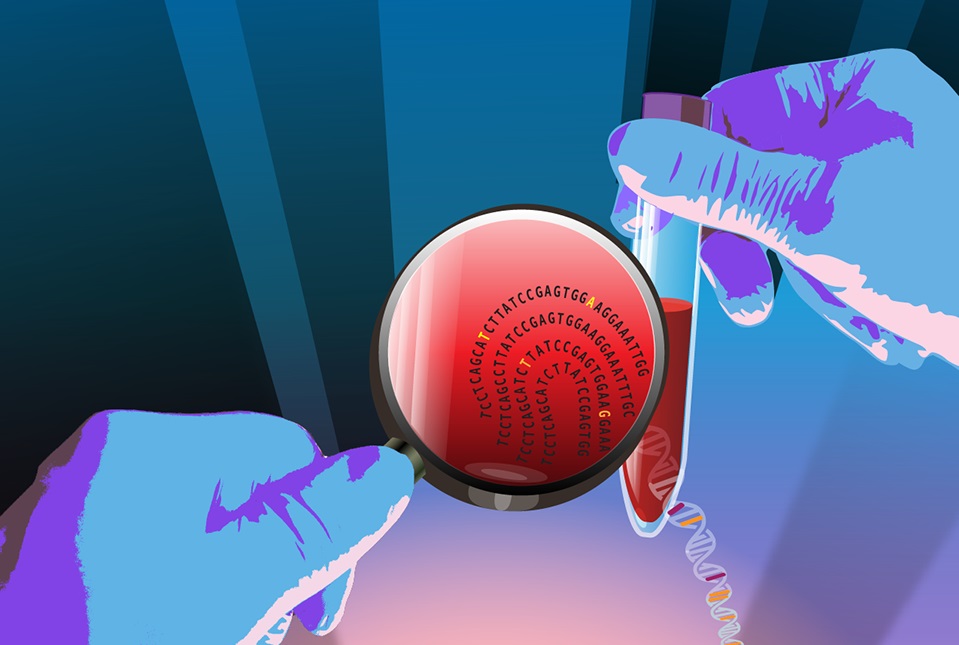
Advanced Liquid Biopsy Technology Detects Cancer Earlier Than Conventional Methods
Liquid biopsy technology has yet to fully deliver on its significant potential. Traditional methods have focused on a narrow range of cancer-associated mutations that are often present in such low quantities... Read more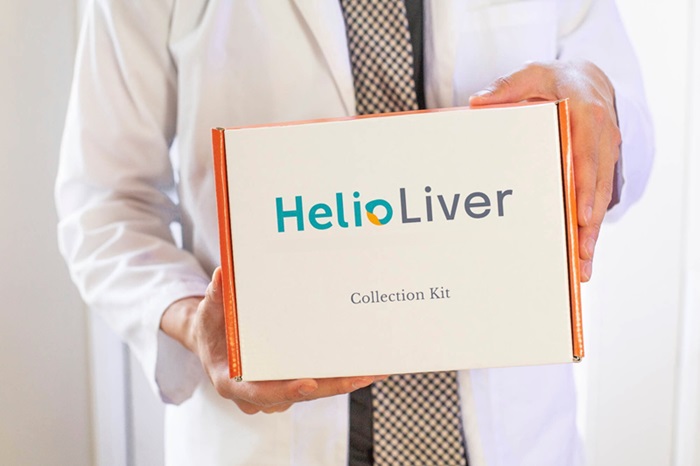
Blood-Based Test Outperforms Ultrasound in Early Liver Cancer Detection
Patients with liver cirrhosis and chronic hepatitis B are at a higher risk for developing hepatocellular carcinoma (HCC), the most prevalent type of liver cancer. The American Association for the Study... Read more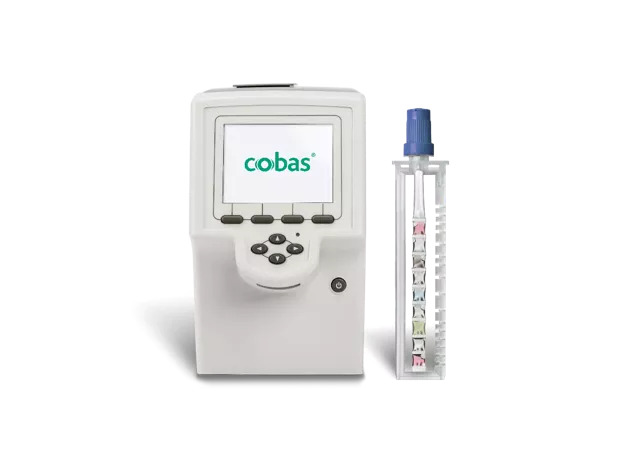
Four-In-One Molecular Test Detects and Differentiates Among Most Prevalent Respiratory Viruses in 20 Minutes
The U.S. Centers for Disease Control and Prevention (CDC) has reported that respiratory diseases in the United States reached high levels during the recent autumn and winter seasons, with SARS-CoV-2 leading... Read more.jpeg)
First-Line PSA Testing More Cost-Effective Than First-Line MRI for Prostate Cancer Screening
Current prostate cancer (PCa) screening protocols typically begin with prostate-specific antigen (PSA) testing, which, if elevated, may lead to further assessment using multiparametric magnetic resonance... Read moreHematology
view channel
Next Generation Instrument Screens for Hemoglobin Disorders in Newborns
Hemoglobinopathies, the most widespread inherited conditions globally, affect about 7% of the population as carriers, with 2.7% of newborns being born with these conditions. The spectrum of clinical manifestations... Read more
First 4-in-1 Nucleic Acid Test for Arbovirus Screening to Reduce Risk of Transfusion-Transmitted Infections
Arboviruses represent an emerging global health threat, exacerbated by climate change and increased international travel that is facilitating their spread across new regions. Chikungunya, dengue, West... Read more
POC Finger-Prick Blood Test Determines Risk of Neutropenic Sepsis in Patients Undergoing Chemotherapy
Neutropenia, a decrease in neutrophils (a type of white blood cell crucial for fighting infections), is a frequent side effect of certain cancer treatments. This condition elevates the risk of infections,... Read more
First Affordable and Rapid Test for Beta Thalassemia Demonstrates 99% Diagnostic Accuracy
Hemoglobin disorders rank as some of the most prevalent monogenic diseases globally. Among various hemoglobin disorders, beta thalassemia, a hereditary blood disorder, affects about 1.5% of the world's... Read moreImmunology
view channel.jpg)
AI Tool Predicts Cancer Patients’ Response to Immunotherapy
Immune checkpoint inhibitors are a form of immunotherapy drug that enables immune cells to target and destroy cancer cells. At present, the Food and Drug Administration has approved two predictive biomarkers... Read more
Molecular Profiling Improves Diagnosis for Children with High Risk Cancers
Cancer remains the leading cause of disease-related death among children in most developed nations, and approximately one-fourth of these patients are diagnosed with aggressive, high-risk, or relapsed... Read moreMicrobiology
view channel
Rapid UTI Test Cuts Detection Time from 3 days to 45 Minutes
Antimicrobial Resistance (AMR), also known as antibiotic resistance or superbugs, is a silent but growing pandemic where bacteria have become resistant to lifesaving antibiotics due to decades of overuse and misuse.... Read more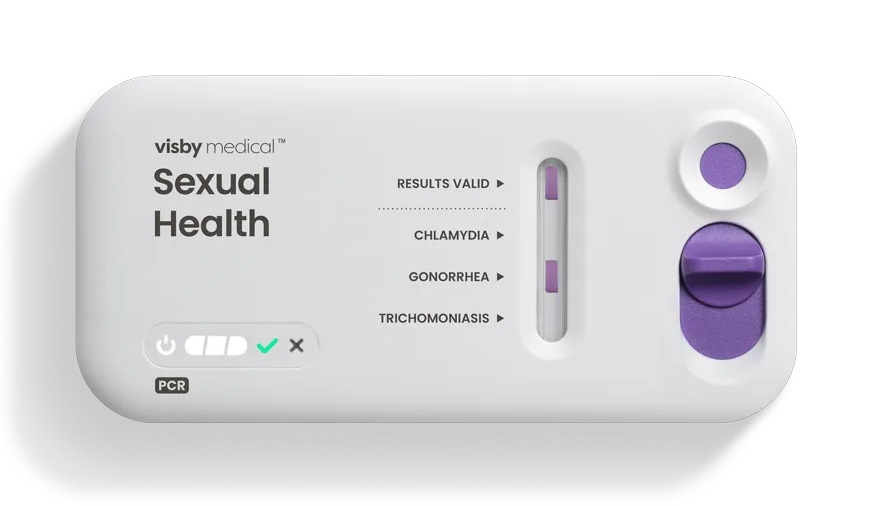
POC STI Test Shortens Time from ED Arrival to Test Results
In a 2024 sexually transmitted infections (STIs) surveillance report by the World Health Organization (WHO), over 2.5 million cases were recorded, alongside a rise in the inappropriate use of antibiotics... Read more
Integrated Solution Ushers New Era of Automated Tuberculosis Testing
Tuberculosis (TB) is responsible for 1.3 million deaths every year, positioning it as one of the top killers globally due to a single infectious agent. In 2022, around 10.6 million people were diagnosed... Read more
Automated Sepsis Test System Enables Rapid Diagnosis for Patients with Severe Bloodstream Infections
Sepsis affects up to 50 million people globally each year, with bacteraemia, formerly known as blood poisoning, being a major cause. In the United States alone, approximately two million individuals are... Read morePathology
view channel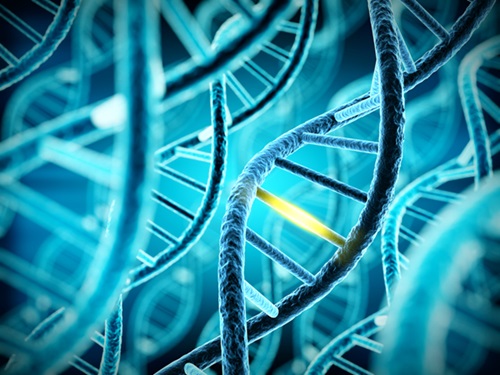
New Technique Reveals Earliest Signs of Genetic Mutations
Mutations are alterations in the molecular "letters" that constitute the DNA code, which serves as the blueprint for all living cells. While some of these changes may be inconsequential, others can lead... Read more
New WHO Reporting System for Lung Cytopathology to Enhance Diagnostic Accuracy
Lung cancer continues to be the most common cause of cancer-related deaths worldwide and ranks as the second most frequently diagnosed cancer in both men and women. The role of lung cytopathology, which... Read more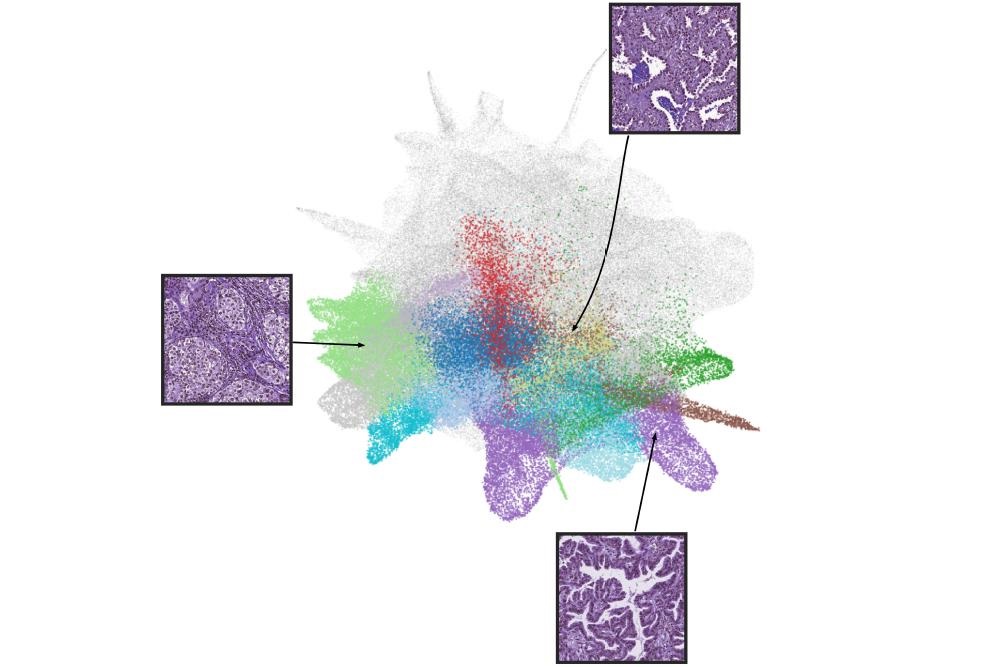
Self-Taught AI Tool Diagnoses and Predicts Severity of Common Lung Cancer
A computer program powered by artificial intelligence (AI) and trained on nearly half a million tissue images can effectively diagnose cases of adenocarcinoma, the most prevalent type of lung cancer.... Read more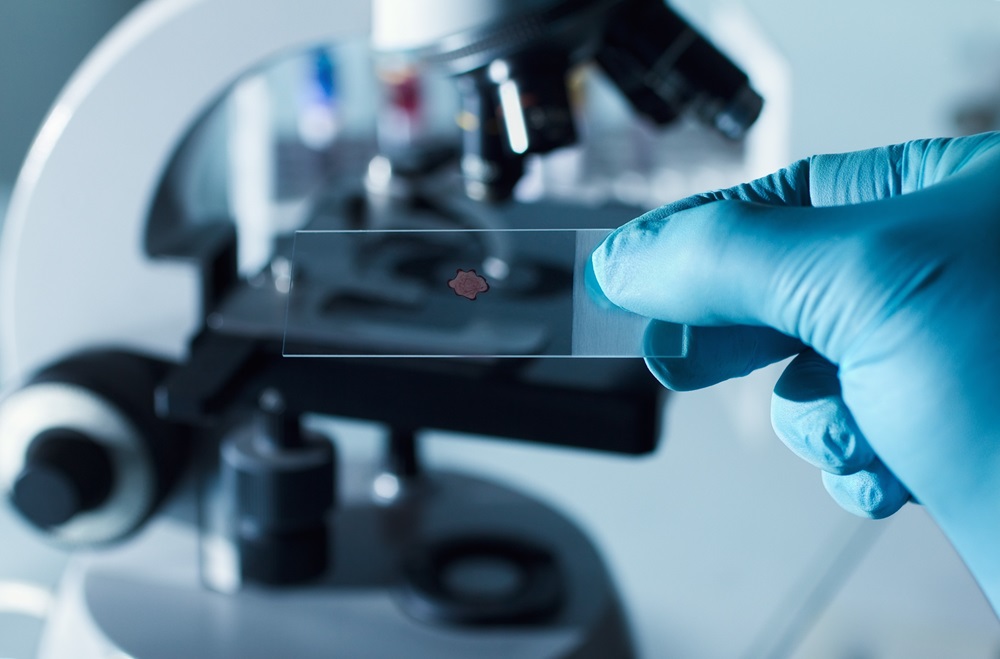
Novel AI-Powered Method for Tissue Analysis Improves Understanding of Disease Pathology
Scientists at Brown University (Providence, RI, USA) and the University of Michigan (Ann Arbor, MI, USA) have created a groundbreaking computational technique to examine complex tissue data, potentially... Read moreTechnology
view channel
Microneedle Patch Detects Skin Cancer Early
Wearable bioelectronics has emerged as a significant innovation in healthcare, especially in the field of biosensing, providing a new method to monitor individual health for both diagnostic and therapeutic purposes.... Read more
New Diagnostic System Achieves PCR Testing Accuracy
While PCR tests are the gold standard of accuracy for virology testing, they come with limitations such as complexity, the need for skilled lab operators, and longer result times. They also require complex... Read moreIndustry
view channel
Roche and Hitachi High-Tech Extend 46-Year Partnership for Breakthroughs in Diagnostic Testing
Roche (Basel, Switzerland) and Hitachi High-Tech (Tokyo, Japan) have renewed their collaboration agreement, committing to a further 10 years of partnership. This extension brings together their long-standing... Read more
Danaher and Johns Hopkins University Collaborate to Improve Neurological Diagnosis
Unlike severe traumatic brain injury (TBI), mild TBI often does not show clear correlations with abnormalities detected through head computed tomography (CT) scans. Consequently, there is a pressing need... Read more
Beckman Coulter and MeMed Expand Host Immune Response Diagnostics Partnership
Beckman Coulter Diagnostics (Brea, CA, USA) and MeMed BV (Haifa, Israel) have expanded their host immune response diagnostics partnership. Beckman Coulter is now an authorized distributor of the MeMed... Read more_1.jpg)




.jpg)


